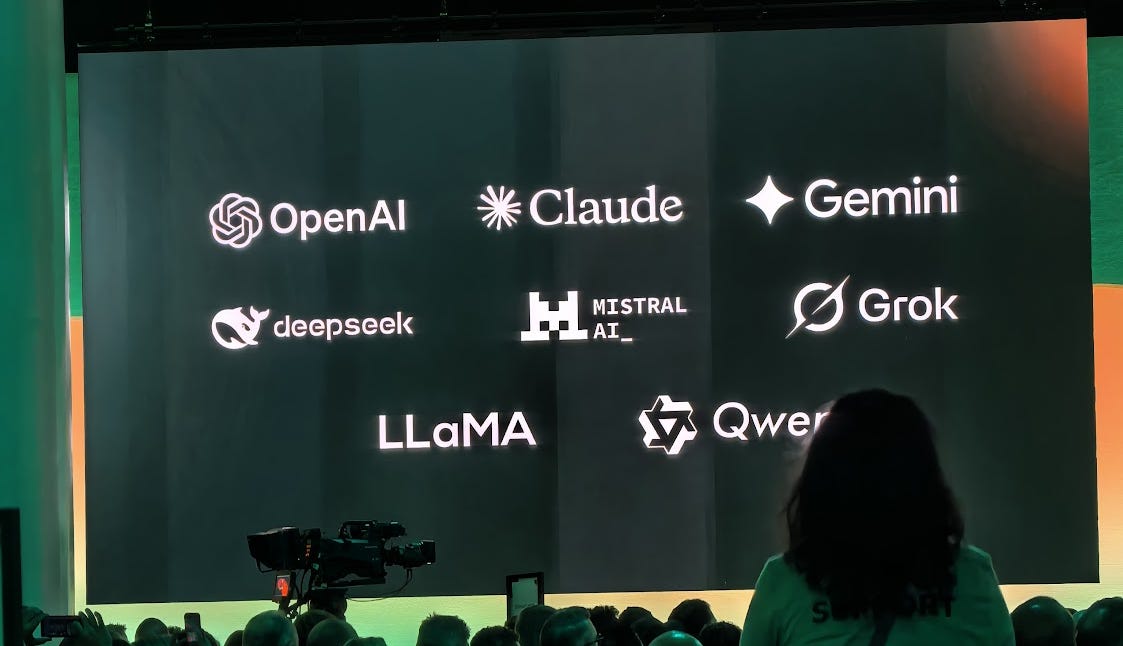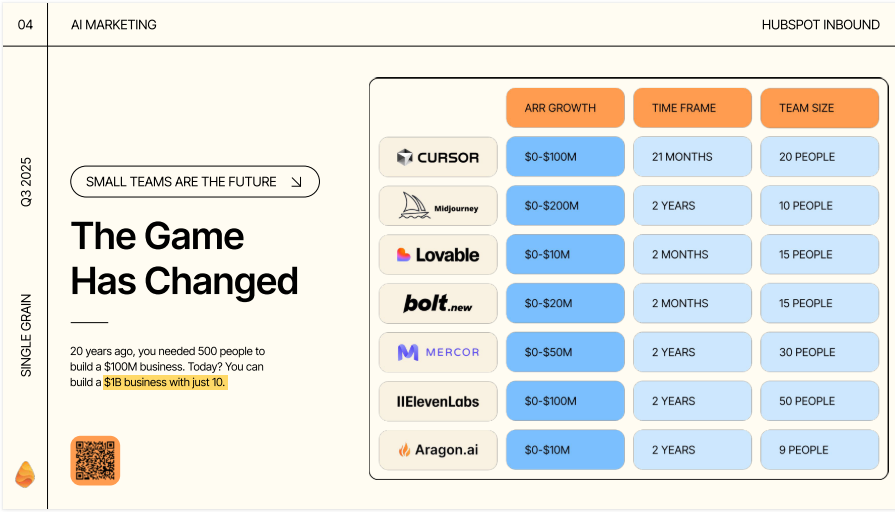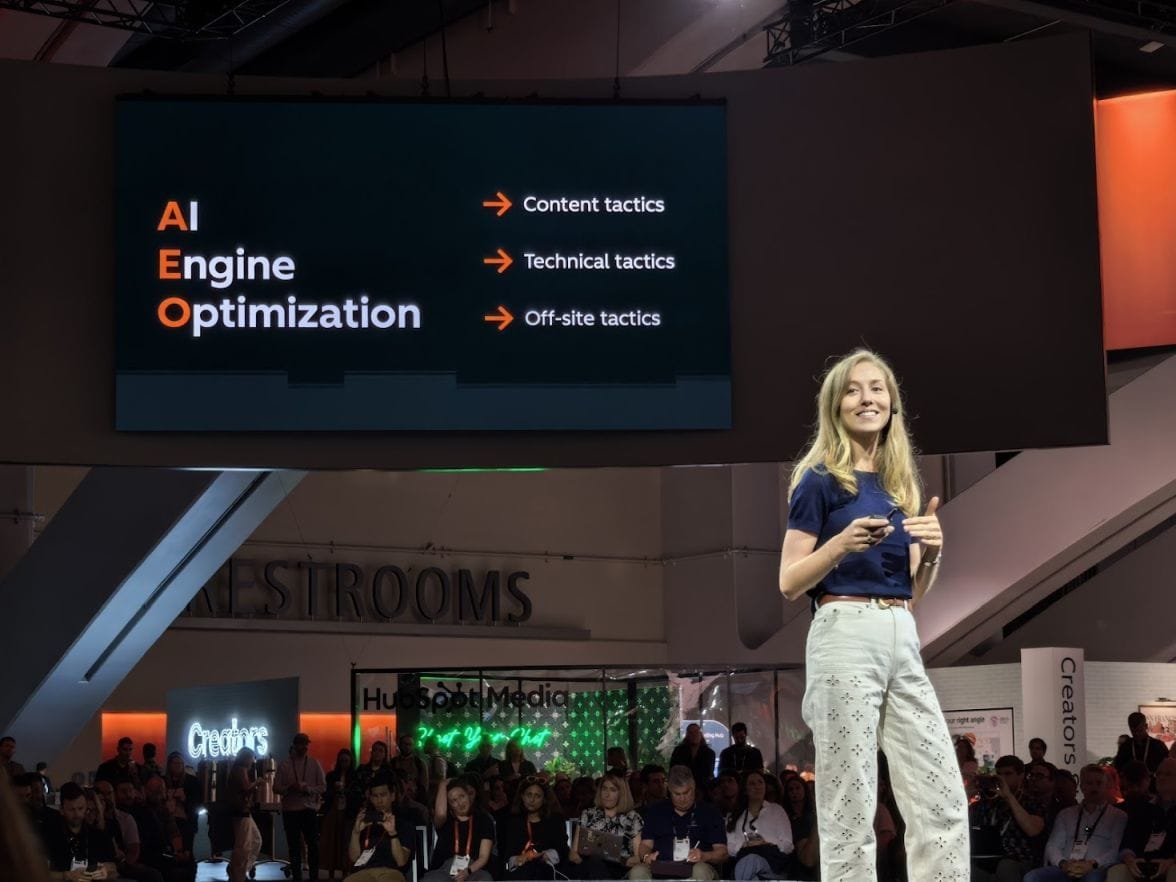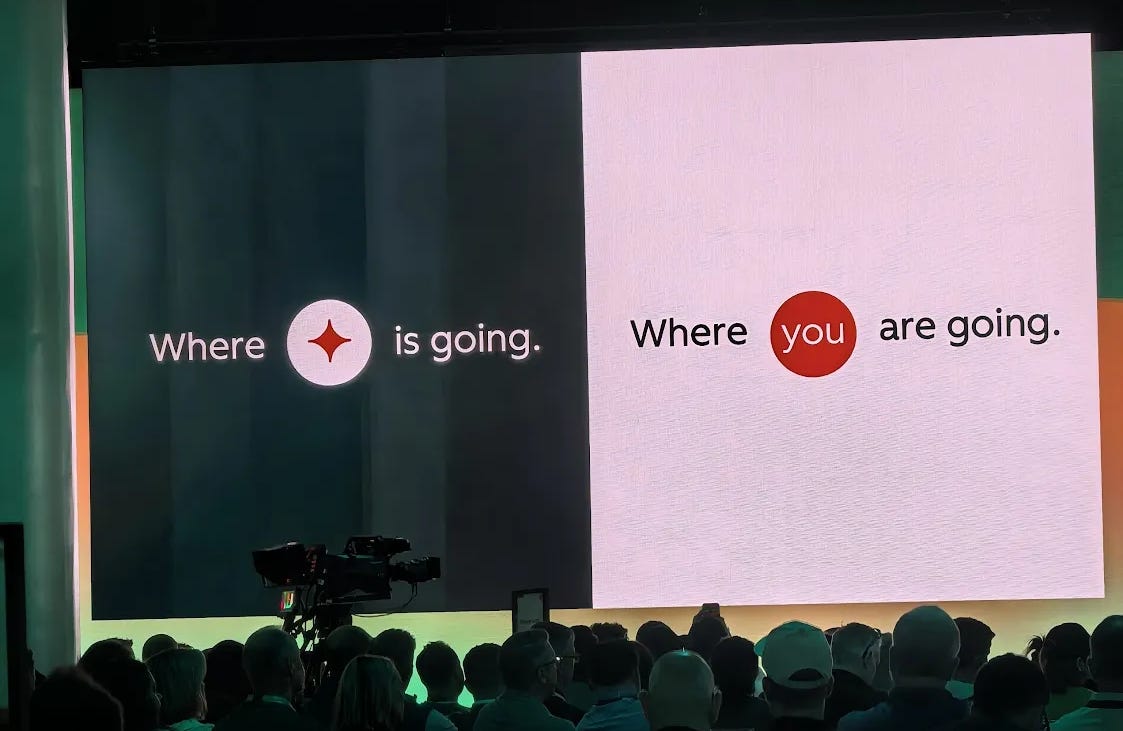You're either not using AI, or you're using it wrong
Becoming good at AI is both easier and harder than you think.
I was in San Francisco earlier this week for HubSpot's Inbound 2025 conference, and my head is still spinning after hearing from various experts about how they use AI. I thought I was decent at AI, but it turns out I've only been scratching the surface.
As I endured the exhausting 15-hour flight back to Singapore, unable to sleep, a thought struck me: What if the world is splitting between those who use AI and those who don't? Are we witnessing the start of a new kind of digital divide?
Do you AI?
First of all, are you even using AI? I believe many do, albeit with differing levels of frequency and competency. If you belong to the camp who opts not to use AI due to its inferior output, I know where you're coming from. Used poorly, AI will flatten your unique voice into polished but soulless words.
I've previously argued that AI won't save bad writers. It's a tool that merely amplifies our thoughts. Disjointed ideas, muddled thinking, and poor skills will never guide AI to produce heights the user themselves cannot reach.
And yes, AI has made some things worse. Just look at LinkedIn, now full of users relying on AI tools to generate scores of comments a day just to rank better. But it's equally true that AI can greatly amplify both your productivity and the quality of your output when used well.
And there are levels beyond that which could completely change your workflows, as I learned this week in San Francisco. But if you never get started, you'll never get to the next phase.
Going 10x with AI
I'm no newbie and have paid versions of ChatGPT, Claude, Gemini and Perplexity. Yet some of the techniques I heard simply blew my socks off. As you can see in the above slide, AI has completely changed the rules of the game, making it possible for very small teams to produce outsized outcomes impossible just five years ago.
But when it comes to AI, practically all of us operate at a base level of competency. This basic use often produces mediocre results, also known as "AI slop." Why? Because large language models are the sum of their training. When you average out the good and the exceptional, you're left with mediocre outputs. People then take one look and throw in the towel.
Better prompts, examples, and iterations help. But this takes time and often isn't replicable across chat sessions. In his talk "40-min AI sprint: branded AI training and take-home playbook," marketing agency founder Kevin Barber was candid: he wouldn't want to pay an employee to spend hours a day "prompting AI."
We need to advance through to higher levels of competency. Getting to the next level involves incorporating context to an extreme degree, with five distinct layers that Kevin shared. If I were to summarise: effective AI use combines systems thinking, structures that inject empathy, and extreme contextual detail. In short, contextual engineering delivers next-level output.
The highest level involves AI agents executing step-by-step workflows. The idea is that you can step away for an hour and come back to see a complete project ready. Kevin uses this for full-stack marketing, so your mileage might vary for other tasks. But there's no reason why similar workflows can't be adapted for your specific needs.
AI is disrupting every industry
And while we're struggling with basic prompts, entire industries are being reshaped. Even if you don't care about leveraging AI, know this: AI is changing established industries, whether you like it or not. At Inbound, one topic that attracted loads of attention was AI engine optimisation (AEO) – ensuring that brands are mentioned when users query AI search engines.
Why the big deal? Because 60% of searches now end without a click, courtesy of users searching with AI and features like Google's AI Overviews. No wonder marketers are panicking.
It doesn't help that the "Awareness" portion of the funnel has fragmented. Today, buyers are on scores of disparate platforms: TikTok, YouTube, Reddit, or listening to their favourite podcasts. With web traffic tanking and the link from search to company blog broken, how will marketers bring in leads, much less convert them?
This is where AEO comes in. And if you're a marketer, you need to start looking into this whether you like it or not. And you know what, I suspect scenarios like this are playing out across dozens of industries right now.
Back to AEO. This isn't a singular strategy, but a constantly evolving list of best practices and techniques to get picked up by AI search engines. Confusingly, some of what works contradicts traditional SEO. For example, content freshness matters more for AEO (one year or less) while SEO favours established content.
Check out various tips for AEO here.
Easier and harder than you think
Getting better at AI is actually easier than you think. You just need to get started. Don't peck at the chat interface for 5 minutes and give up when it doesn't immediately produce magic. Persist and vary your approach, iterate and try again. Most people fail because they ask AI one question, get a mediocre response, and conclude AI is overhyped. That's like judging a piano after playing one note.
Also, experiment with the various AI models if you can, as each have differing strengths. ChatGPT excels at a wide array of tasks, Claude is exceptional at writing and coding, while Perplexity shines at quick research. Using just one is like having a toolbox but only ever using the hammer.
But true mastery demands more. To get to the point of 10x productivity with AI won't be easy. It would probably require you to unlearn old skills or mindsets that are hindering your progress. You'll need to stop thinking of AI as a search engine that gives you answers and start thinking of brand-new ways to leverage it. You will need to experiment - a lot.
You will also need to think both systematically and creatively to tackle new problem statements. The systematic part is about building workflows and templates that make AI outputs consistent and reliable. The creative part is figuring out how to break down complex tasks into segments that AI can actually handle.
My question to you is: Where are you going with AI? Because standing still isn't an option anymore.
A version of this first appeared in my free Tech Stories newsletter that went out earlier today. This includes a digest of other stories that I wrote this week. To get it in your inbox, sign up here.






